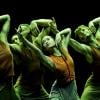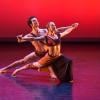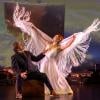
We’re doomed. Or at least it felt that way during most of Akram Khan’s Jungle Book reimagined, a multimedia interpretation of Rudyard Kipling’s 1894 classic that, in Khan’s telling, takes place in the near future — 2029 — and deals with climate change. In its U.S. premiere at Santa Monica’s BroadStage over the weekend, the two-act, two-hour-plus work (which lands at Stanford Live Dec. 2–3) had some beautiful moments but suffered from overkill, with a surfeit of creators all part of the exceedingly complicated mix.
In Khan’s narrative, environmental calamity is the result of rising sea levels. The choreographer — whose numerous works, such as his recent retelling of Giselle, have proven mostly first-rate — here mines Kipling’s story but with a twist. Instead of a boy, Mowgli, danced by a splendid Pui Yung Shum, is female. Her aquatic journey, like the entire saga, unspools with the aid of immersive line-art animations and video designs, courtesy of YeastCulture (Adam Smith and Nick Hillel) and a trio of rotoscope artists/animators. These elements are at first pleasing and near smile-inducing but are finally too much of a good thing and might work better as a self-contained IMAX production.
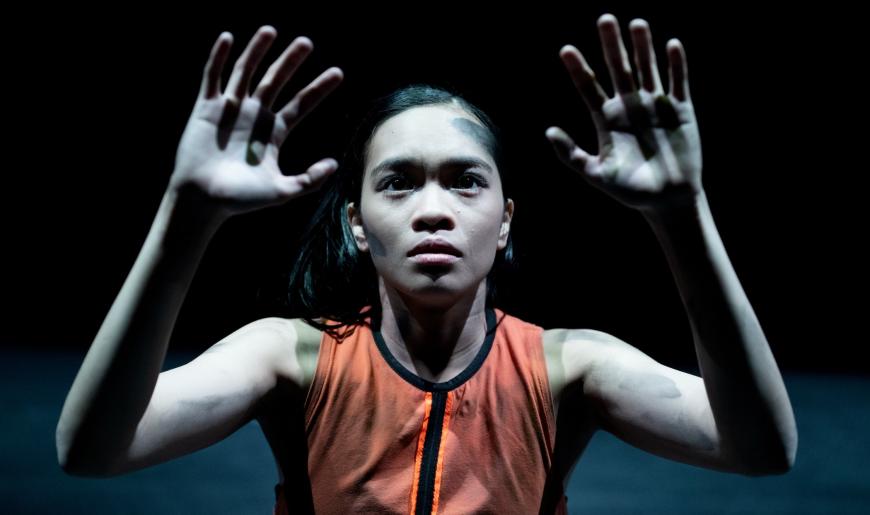
Washing ashore in a decimated London (Big Ben is the signifier here), our heroine is found by a coterie of animals. The usual suspects, including stampeding giraffes and elephants, are there, as well as escaped lab monkeys (think Planet of the Apes) — all having overrun the now-forsaken land. Befriending Mowgli are Baloo, a dancing bear performed by an ebullient Tom Davis-Dunn, his wide-hipped stance and swingy arms offering some slight comic relief, and Bagheera, a most beguiling panther brought to life by Holly Vallis, who made the most of slinking about on all fours. The duo’s frisky scuffling was also a plus.
Composer Jocelyn Pook, who wrote the score to Kahn’s full-length 2011 solo Desh, has crafted a sumptuous soundtrack that’s rife with melancholy and exotic rhythmic accents but is too often truncated by an officious text. In addition to the animated menagerie — including a bevy of birds in murmuration mode — there are more than a dozen voice actors tasked with the telling of Tariq Jordan’s uber-wordy script.
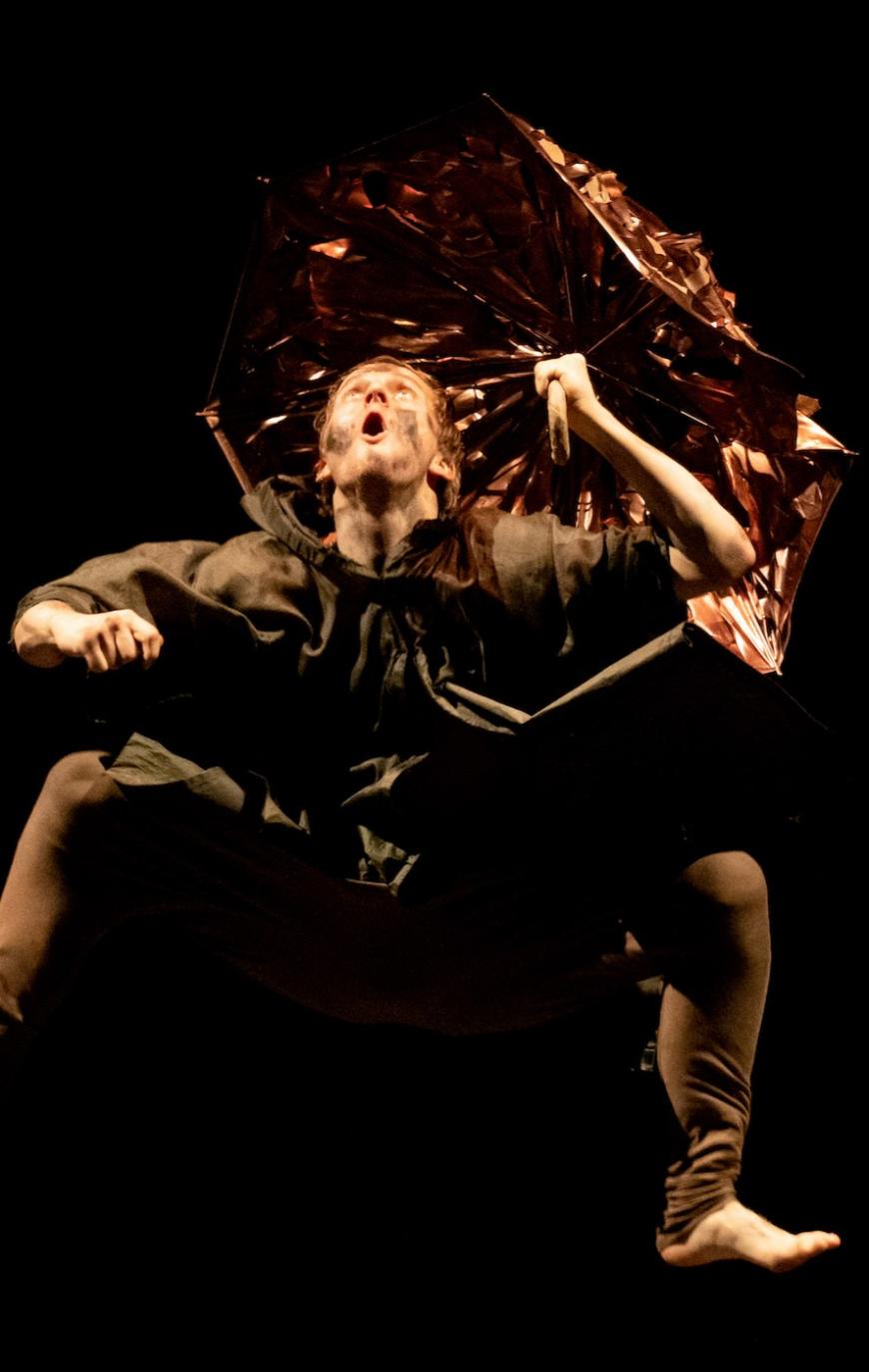
Dance is the art of storytelling through movement. Yet, because this complex narrative not only features flashbacks to the cataclysmic event but also tells Mowgli’s backstory with her mother (a wise and calming voice-over), the performers are rarely front and center. Add to this the fact that all the dancers are clad in red tops and drab gray harem-like pants (by the production’s visual stage designer, Miriam Buether), and the movements seemingly get lost in the shuffle.
Still, when the dancers can actually be seen against the backdrop of all the extraneous stuff, they do shine. Unisons are particularly effective, especially early in Act 2, when the group deploys yoga-like pigeon poses, sublimely arched feet, and sensuous writhing arms. And a pas de deux with jazz hands provided some much-needed oomph. But while Kahn, an award-winning choreographer of Bangladeshi descent, infused individual signature steps with a hint of kathak (a South Asian storytelling idiom that features quicksilver bare feet, dazzling pirouettes, detailed hand movements, and theatrical facial expressions), more of this vocabulary would have been welcome.
There were standouts. Max Revell, leader of the Bandar-logs (Hindi for “monkey people”), made the most of his simian stances, including tossing off a soupcon of hip-hop. An ominous pack of wolves were nimbly led by Luke Watson and Maya Balam Meyong (Rama and Raksha, respectively). Matthew Sandiford proved a worthy and authoritative Akela, president of the animals’ council, and was also the head of Kaa, a giant green-eyed snake that was represented by a conga line of dancers brandishing cardboard boxes above their heads. This last effort appeared crude and ineffective, although it might have appealed to the kiddie aspect of the work, as well as being a nod to sustainability.
And speaking of cardboard, Buether’s stage design was littered with boxes and, at one point, shopping carts, perhaps a reference to the homelessness crisis. Then, there was the overriding problem that BroadStage’s mainstage is actually too small for this very busy production. The cast of 10 also included dancers Harry Theadora Foster, Filippo Franzese, Bianca Mikahil, and Jan Mikaela Villanueva.
Add to the show’s huge list of contributors Gareth Fry (sound designer), Michael Hulls (lighting designer), Mavin Khoo (creative associate/coach), and Sharon Clark (dramaturgical advisor), and the production inevitably bogs down in its own sense of Gesamtkunstwerk.
Who is the audience for Jungle Book reimagined? It seems too complicated for kiddies and too chaotic for adults, with a seemingly random gunshot fired near the work’s end a jolting and unnerving effect. And while Khan’s eco-message nearly pummels the viewer with its Armageddon-like scenario — and he is no doubt preaching to the choir in Santa Monica — what the director/choreographer finally offers is a fairly simple concept. In order to survive, we humans are not only obliged to respect nature but abide peacefully with animals.


